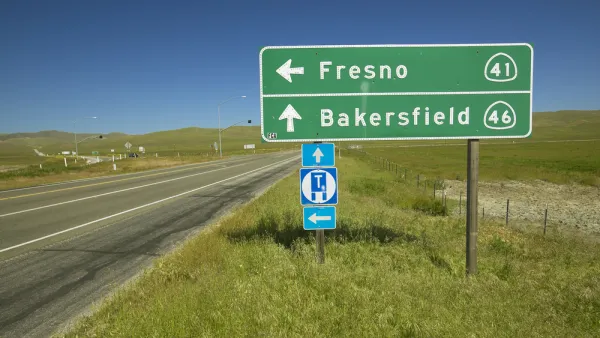The California Legislature took steps to address the state's housing crisis this year, but housing activists might look to the Governor's High Speed Rail project to provide a link to affordable housing in the Central Valley.
The political messaging of the California High Speed Rail over the past decade has been focusing on the notion of connecting Northern California to Southern California, eliminating those long drives on the Interstate 5 or 101 Freeway. Now, in an interview with The Planning Report, California High-Speed Rail Authority Board Chair Dan Richard reframing the value of CA HSR as one solution to the significant state housing crisis.
As the CA HSR Authority seeks a new CEO to guide the program’s next phase, Richard spoke about the fact that the entire program is at a crossroads. Politically unpopular and still needing a huge amount of investment to be financed to completion, the high-speed rail project is also currently successfully laying track and creating jobs in the Central Valley.
In the interview, Richard spoke about the role of high-speed rail to allow Silicon Valley to continue to flourish by relieving some of the housing pressure. As the first leg of the project will connect the Central Valley to San Jose, Richard spoke of the state's goal is to place transit-oriented development and housing investments into cities like Fresno and Madera that will have stops along the route. The families living in those communities will be able to get to the jobs hub of San Jose in under 90 minutes.
Developing in the Central Valley is less than half of the cost to develop in San Francisco, according to Gov. Jerry Brown's budget summary for 2017-18. In building where local governments are actively pushing for development and revitalization, the rail project seeks to boost the local, regional, and even national economy.
"[The first leg] will open up freight rail capacity for ports that see 40 percent of America’s imports. And because of the Build American provision, we’re on the cusp of encouraging a whole new manufacturing sector around high-speed trade. The federal government should continue to be a full partner in this effort, particularly when California is stepping forward with more than $20 billion of state investment...In Fresno, one of the poorest counties in the United States—with a poverty rate in excess of 25 percent— the unemployment rate has fallen below 10 percent for only the fourth time in the last 25 years. Academic studies are pointing to high-speed rail investment as the main reason for that. We’re also working with the city of Fresno on development plans around their station. The word that comes to mind is “transformative”: I think this investment is going to transform Fresno and other Central Valley cities that have been hollowed out over the years."
Dealing with the financing is still a looming challenge. When asked about the future, Richard pointed to the recent action by the California Legislature to extend the cap-and-trade program for 10 years as major boost to the HSR Authority's ability to finance. He opined on the situation, saying:
"The bedrock of financing is certainty. Whether you’re a business, a government, or whatever, if you’re going to ask other people to loan you money, you’ve got to provide them with a sense of stability in terms of repayment. Once we have that, we’ll be able to tap into a number of financing programs, both public and private."
Read more in The Planning Report.
FULL STORY: CA High-Speed Rail Chair on the 'Transformative' Impacts of 'Connecting' California

National Parks Layoffs Will Cause Communities to Lose Billions
Thousands of essential park workers were laid off this week, just before the busy spring break season.

Retro-silient?: America’s First “Eco-burb,” The Woodlands Turns 50
A master-planned community north of Houston offers lessons on green infrastructure and resilient design, but falls short of its founder’s lofty affordability and walkability goals.

Delivering for America Plan Will Downgrade Mail Service in at Least 49.5 Percent of Zip Codes
Republican and Democrat lawmakers criticize the plan for its disproportionate negative impact on rural communities.

Test News Post 1
This is a summary

Test News Headline 46
Test for the image on the front page.

Balancing Bombs and Butterflies: How the National Guard Protects a Rare Species
The National Guard at Fort Indiantown Gap uses GIS technology and land management strategies to balance military training with conservation efforts, ensuring the survival of the rare eastern regal fritillary butterfly.
Urban Design for Planners 1: Software Tools
This six-course series explores essential urban design concepts using open source software and equips planners with the tools they need to participate fully in the urban design process.
Planning for Universal Design
Learn the tools for implementing Universal Design in planning regulations.
EMC Planning Group, Inc.
Planetizen
Planetizen
Mpact (formerly Rail~Volution)
Great Falls Development Authority, Inc.
HUDs Office of Policy Development and Research
NYU Wagner Graduate School of Public Service



























